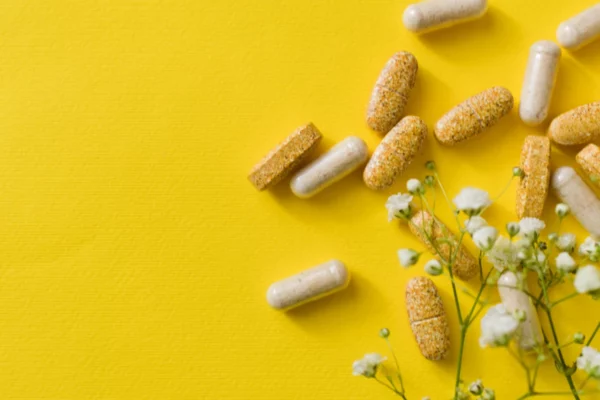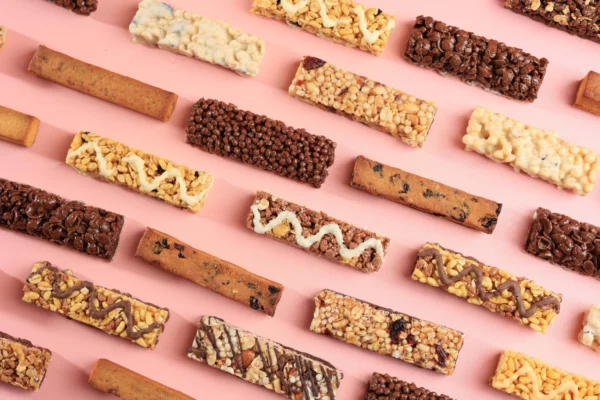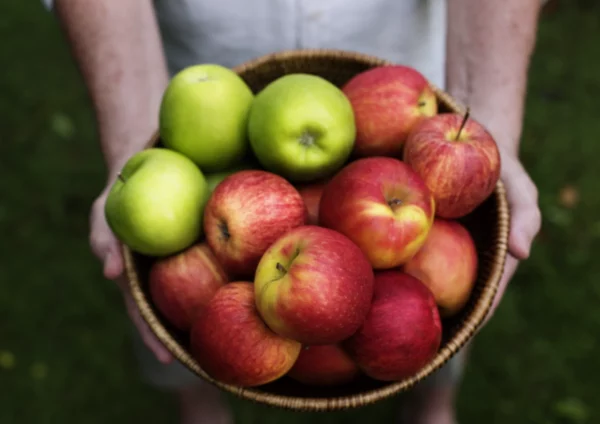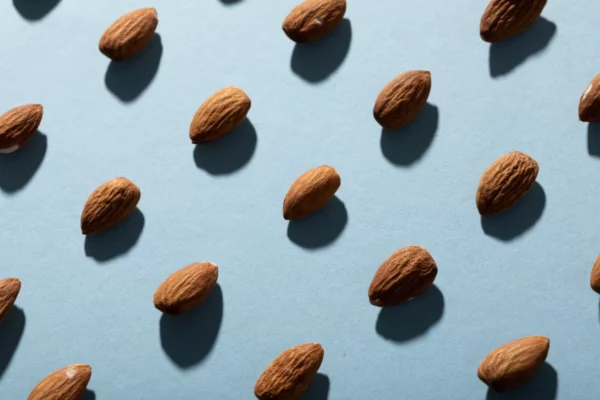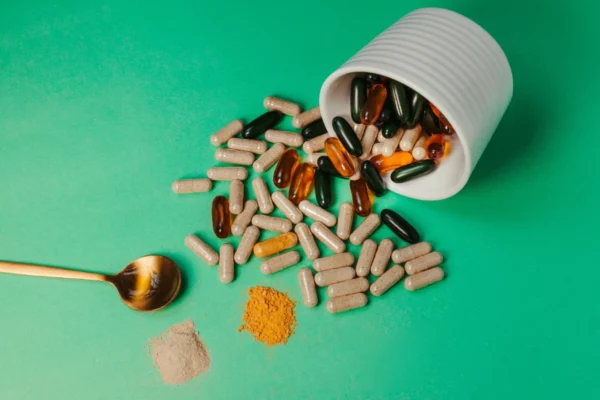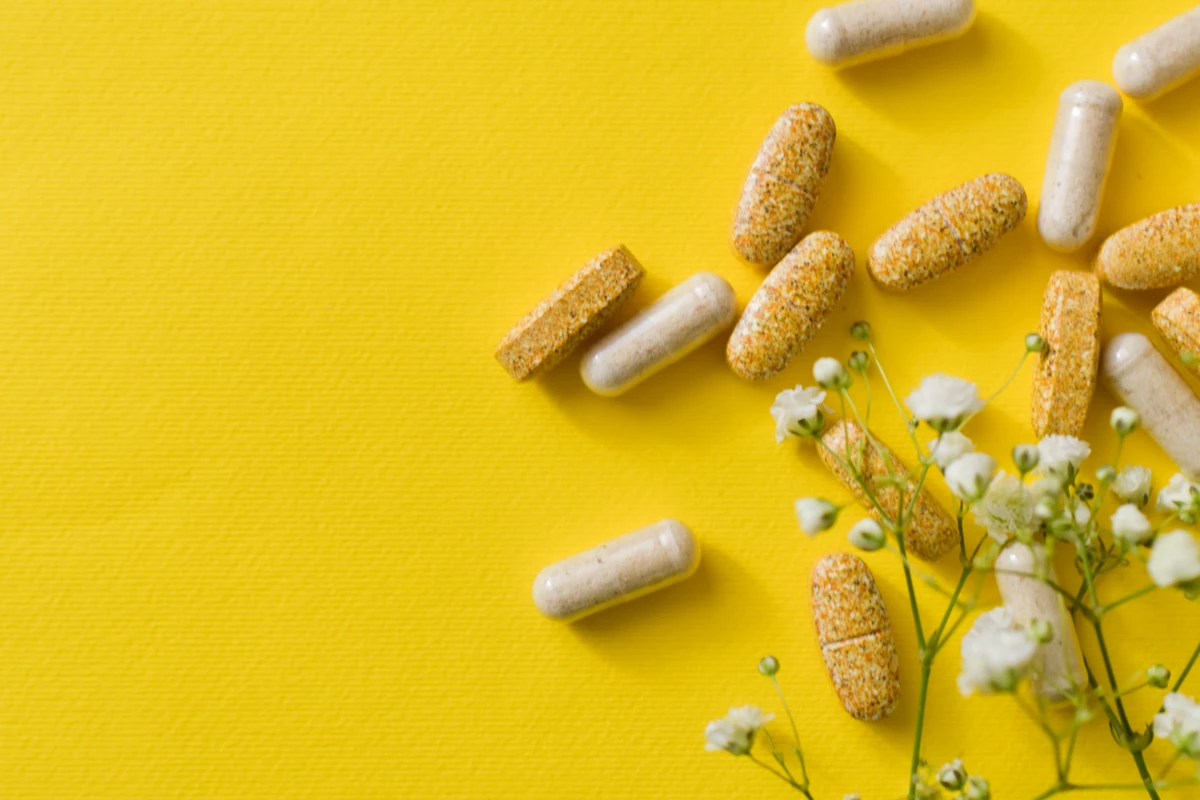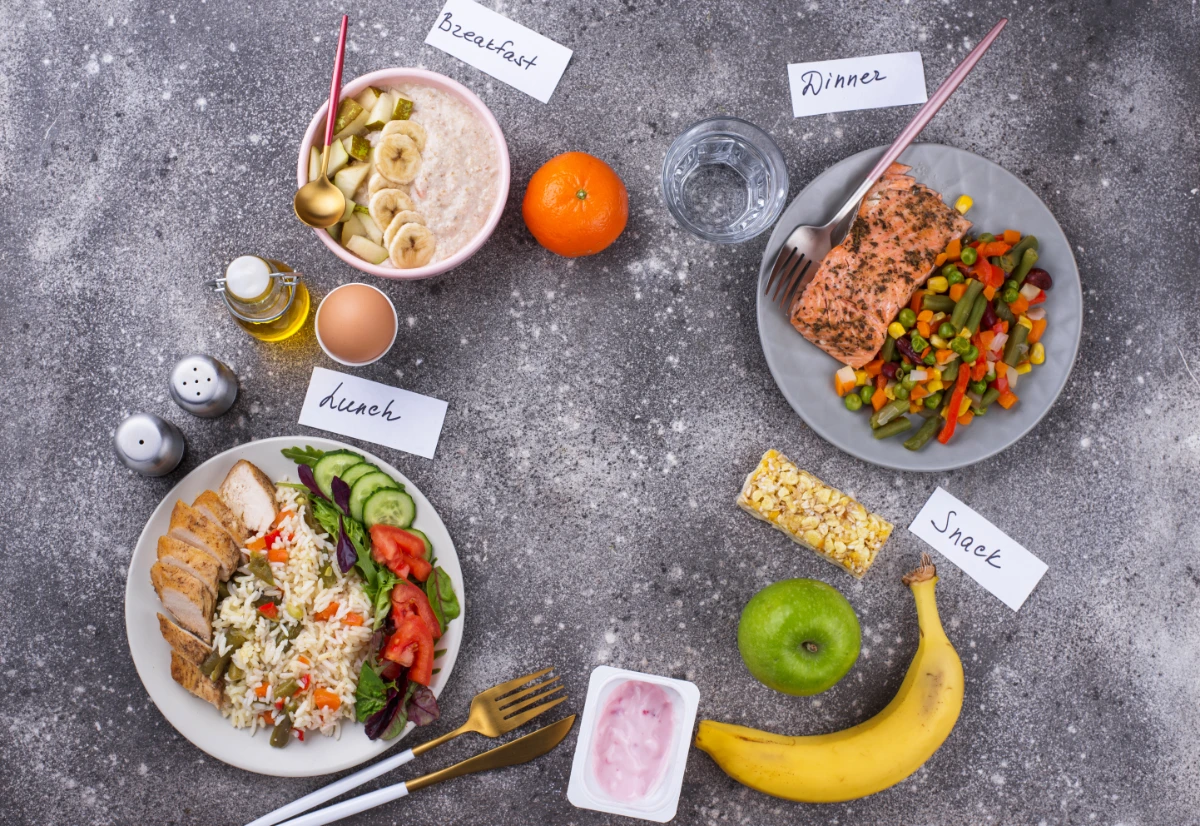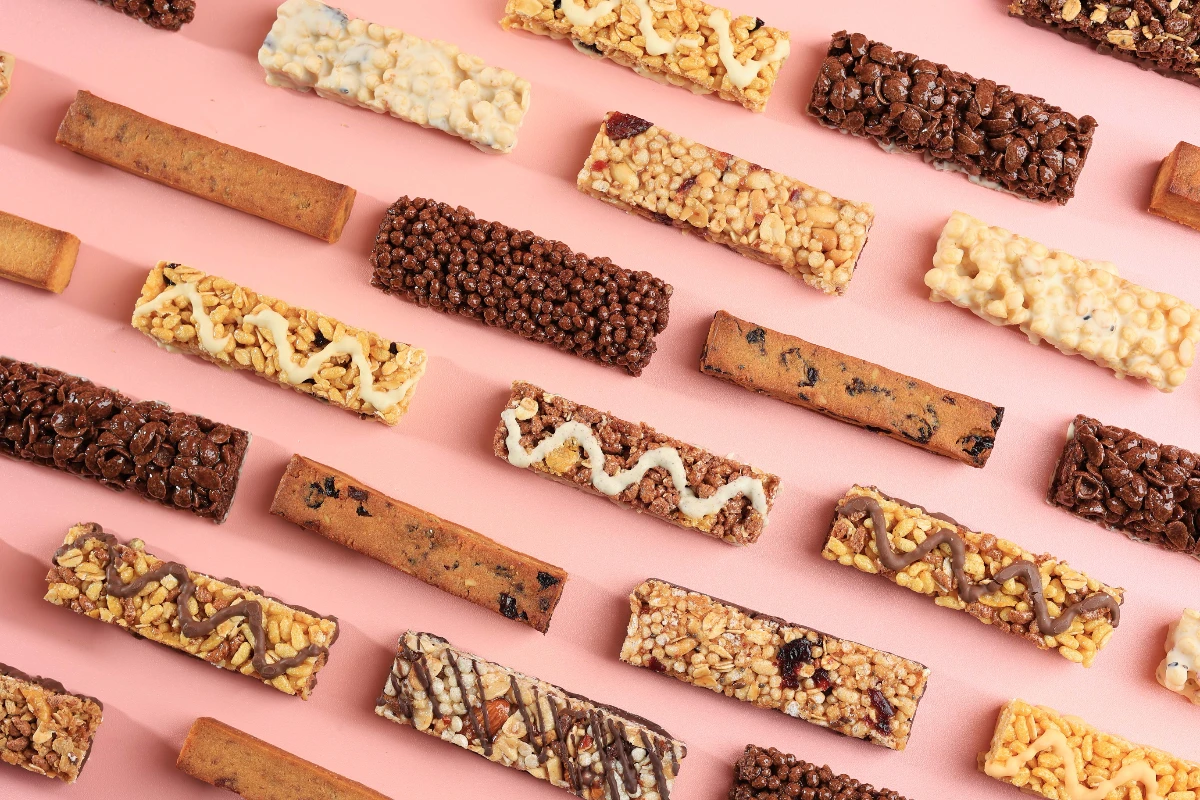Introduction
Adopting a high-fiber diet provides immense nutritional benefits and is one of the best ways to improve your overall health. Just getting the recommended amount of fiber in your diet provides immense health benefits and is one of the best ways to improve your overall metabolic health.
Fiber is a carbohydrate in plant-based foods like fruits, vegetables, whole grains, beans, nuts and seeds. Incorporating good sources of fiber into your diet is essential for good health. Dietary fiber promotes digestive health, aids in weight management, reduces cholesterol levels, stabilizes blood sugar, and much more. Despite the many advantages, most people fall short of the recommended daily fiber intake. This beginner’s guide will walk you through everything you need to know to easily transition to and stick with a high-fiber diet.
Purpose of the Guide
This comprehensive guide provides information and tips for transitioning to and maintaining a high-fiber diet. You’ll learn about different types of fiber, high-fiber food sources, recommended daily intake, high-fiber meal ideas, how to track progress, and more. With this knowledge, you’ll be able to adopt lifelong dietary changes to improve health.
Recommended Daily Intake / How Much Fiber Do You Need?
According to the Institute of Medicine, adults should aim for 25-38 grams of fiber daily, depending on gender and age. Most Americans only get about 15 grams per day, on average. A high-fiber diet ensures you reach the recommended intake and potentially beyond through easy dietary changes.
The recommended daily amount of dietary fiber is 25-30 grams per day. However, most Americans only get about 15 grams of fiber daily.
The Institute of Medicine recommends the following daily fiber intake:
- Men 50 years and younger: 38 grams
- Men 51 years and older: 30 grams
- Women 50 years and younger: 25 grams
- Women 51 years and older: 21 grams
Gradually increasing fiber intake is recommended to allow the digestive system to adapt and avoid adverse effects.
Reference: Institute of Medicine. Dietary Reference Intakes for Energy, Carbohydrate, Fiber, Fat, Fatty Acids, Cholesterol, Protein, and Amino Acids. 2005.
What is a High-Fiber Diet?
A high-fiber diet typically refers to a diet that meets or exceeds the recommended daily fiber intake, but simply consuming slightly more than the minimal recommended amount doesn’t necessarily classify a diet as “high-fiber.” The term “high-fiber diet” often implies a consistent focus on incorporating a variety of fiber-rich foods to substantially exceed the minimal recommendations, particularly when there is a specific health goal, such as improving digestion, managing weight, or lowering cholesterol levels.
The minimal recommended daily intake is set to meet the basic health needs of the average person. Consuming more fiber than this amount can offer additional health benefits, but a balance must be struck. Extremely high levels of fiber intake can sometimes lead to gastrointestinal issues, especially if the increase is sudden. These symptoms will resolve as the gastrointestinal tract adjusts to this new normal.
What is Fiber, and Why is it Important?
Fiber is a type of carbohydrate that the body cannot digest. Much of the fiber passes through the small intestine undigested and enters the large intestine, providing the fuel for your microbiome. Fiber is categorized into two main types: soluble and insoluble fiber. Getting plenty of both types of fiber can provide health advantages.
Fiber normalizes bowel movements, reduces cholesterol levels, helps control blood sugar, aids in achieving a healthy weight, and much more. Getting enough fiber can help prevent chronic diseases and conditions like heart disease, diabetes, cancer, and obesity. Fiber also helps you feel full, so you eat less overall.
Understanding Fiber
To follow a high-fiber diet, you must first understand what dietary fiber is and how it impacts health.
Definition and Types of Fiber
Dietary fiber refers to the parts of plant foods that cannot be completely broken down by human digestive enzymes. There are two main types of fiber:
Soluble fiber – Dissolves in water to form a gel-like material. It helps lower cholesterol and blood sugar levels. Found in oats, peas, beans, apples, citrus fruits, carrots, barley, etc.
Insoluble fiber – Does not dissolve in water. It promotes regular bowel movements and prevents constipation. Found in wheat bran, whole grains, nuts, beans, vegetables, etc.
Most plant foods contain a combination of both soluble and insoluble fiber. To get the most health benefits, it’s ideal to include both varieties in your diet.
Sources of Fiber
Excellent sources of dietary fiber include:
- Vegetables – artichokes, green peas, broccoli, potatoes, sweet potatoes, etc.
- Fruits – pears, berries, apples, bananas, dried fruits, etc.
- Whole grains – brown rice, barley, oats, quinoa, farro, etc.
- Nuts and seeds – almonds, walnuts, chia seeds, flaxseeds, etc.
- Legumes – lentils, beans, chickpeas, soybeans, etc.
The best sources of fiber include vegetables, fruits, whole grains, beans, nuts and seeds. Focusing your diet around these fiber-rich foods is a great way to get the fill of fiber your body needs.
Some examples of foods with plenty of fiber:
- Lentils, 16g per 1 cup cooked
- Raspberries, 8g per 1 cup
- Artichokes, 10g per medium
- Split peas, 16g per 1 cup cooked
- Chia seeds, 11g per ounce
- Prunes, 7g per 1/2 cup
- Pinto beans, 15g per 1 cup cooked
- Oatmeal, 4g per 1/2 cup uncooked
- Whole-grain bread, 3g per slice
- Broccoli, 5g per 1 cup cooked
Health Benefits of Dietary Fiber
Health Benefits of a High-Fiber Diet
Making fiber a bigger part of your diet provides a host of health advantages.
Eating plenty of fiber provides essential nutrients and has been linked to many health benefits:
- Reduces risk of colon cancer and diverticular disease
- Promotes digestive health and regularity
- Helps manage weight and obesity
- Lowers risk of heart disease and high blood pressure
- Improves regulation of blood sugar and insulin resistance
- Lowers LDL “bad” cholesterol while maintaining HDL “good” cholesterol
- Decreases inflammation associated with diseases
A high-fiber diet from whole plant foods is one of the best ways to reduce risk of diabetes, heart disease, and other chronic illnesses.
Digestive Health
Dietary fiber normalizes bowel movements and helps maintain regularity. Soluble fiber soaks up water and forms a gel, while insoluble fiber adds bulk and weight to stool. This improves the transit time of food through the digestive tract. Fiber prevents constipation, diarrhea, and other gastrointestinal issues like diverticulitis or hemorrhoids.
Weight Management
High-fiber foods tend to be lower in calories and fat. The fiber fills you up and helps control hunger and appetite. This promotes a healthy body weight and prevents overeating. One study found people who doubled their fiber intake lost weight, while those halving fiber gained weight.
Reference: Tucker LA, Thomas KS. Increasing total fiber intake reduces risk of weight and fat gains in women. J Nutr. 2009;139(3):576-81.
Cardiovascular Health
Soluble fiber has been shown to lower total blood cholesterol and LDL “bad” cholesterol levels. This effect reduces your risk for heart disease and stroke. Fiber also slows the absorption of cholesterol from food to keep levels balanced.
Reference: Anderson JW, Baird P, Davis RH Jr, et al. Health benefits of dietary fiber. Nutr Rev. 2009 Apr;67(4):188-205.
Blood Sugar Control
The gel formed when soluble fiber mixes with water slows down digestion. This causes a slower rise in blood sugar after eating and prevents spikes. Maintaining stable blood glucose levels is particularly helpful for those with diabetes or prediabetes.
Reference: Weickert MO, Pfeiffer AF. Metabolic effects of dietary fiber consumption and prevention of diabetes. J Nutr. 2008 Mar;138(3):439-42.
Planning Your High-Fiber Diet
To start a high-fiber diet, assess your eating habits and develop a realistic plan for change.
Assessing Your Current Diet
Keep a detailed food journal for several days. Document everything you eat and drink, including water and snacks. Calculate the average daily fiber you currently consume. Compare this to the recommended intake for your age and gender. The difference is how much additional fiber you should aim to incorporate.
Setting Realistic Goals
Don’t expect to drastically change your diet overnight. Set incremental goals to increase fiber by 5 grams each week until you reach the recommended daily amount. Going too fast can cause digestive discomfort. Give your body time to adapt to the additional fiber.
Creating a Meal Plan
Plan balanced meals and snacks that emphasize fiber-rich foods. Try new high-fiber recipes. Prepare a grocery list so nutrient-dense ingredients are on hand. Get creative with breakfasts, lunches, dinners, and desserts. Refer to the high-fiber foods list.
Shopping List and Preparation Tips
- Stock up on fruits, vegetables, beans, whole grains, nuts and seeds.
- Soak and cook dried beans to reduce gas-causing compounds.
- Try whole-grain versions of common foods like bread, pasta, and cereal.
- Buy produce in season when it’s freshest and least expensive.
- Blanch and freeze vegetables to always have them available.
Reference: Anderson JW, Baird P, Davis RH Jr, et al. Health benefits of dietary fiber. Nutr Rev. 2009 Apr;67(4):188-205.
High-Fiber Recipes and Meal Ideas
There are many delicious ways to incorporate high-fiber foods into your daily diet.
Breakfast Ideas
- Whole wheat toast with avocado and egg
- Smoothie with spinach, chia seeds and almond milk
- Overnight oats with Greek yogurt, walnuts and cinnamon
- Vegetable and cheese omelet with whole-grain toast
Lunch Ideas
- Chopped salad with beans, vegetables and quinoa
- Lentil vegetable soup with whole grain crackers
- Grilled chicken wrap with roasted veggies in a whole wheat tortilla
- Tuna salad sandwich on rye bread with lettuce and tomato
- Burrito bowl with brown rice, black beans, salsa and guacamole
Dinner Ideas
- Chicken stir fry with broccoli, carrots, peppers and brown rice
- Sheet pan salmon with roasted Brussels sprouts and sweet potato
- Gluten free pasta with meatballs, tomato sauce and garbanzo beans
- Vegetable lasagna made with spinach, eggplant and zucchini
- Beef chili over a baked potato topped with avocado
Snacks and Desserts
- Yogurt parfait with nuts, seeds and mixed berries
- Trail mix with dried fruit, nuts and dark chocolate
- Apple with almond or peanut butter
- Carrots and hummus
- Oatmeal raisin cookies made with whole wheat flour
Reference: Schakel SF, Sievert YA, Buzzard IM. Sources of data for developing and maintaining a nutrient database. J Am Diet Assoc. 1988 Oct;88(10):1268-71.
Challenges and How to Overcome Them
Transitioning to a high-fiber diet comes with some potential hurdles. Being prepared helps you stick with the changes.
Common Mistakes
- Not drinking enough water, leading to constipation
- Adding fiber too quickly, causing gas or bloating
- Relying too heavily on supplements versus food sources
- Basing the diet around meat and refined carbs instead of plants
- Not tracking portions of high-calorie foods along with fiber
Strategies for Success
- Stay hydrated by drinking water and herbal tea
- Introduce high-fiber foods slowly, then scale up
- Meet fiber goals primarily through whole foods first
- Make vegetables, fruits, beans, nuts, and whole grains the stars of your plate
- Be mindful of fat, sugar, and excess calories in addition to fiber
Addressing Health Concerns
Certain groups should consult their doctor before increasing fiber intake:
- Those with a history of abdominal surgeries or chronic gastrointestinal issues
- People taking medications that impact digestion, like antibiotics or antacids
- Individuals with difficulty swallowing or chewing due to neurological impairments
- Anyone diagnosed with a bowel obstruction or colon disease
Reference: Slavin JL. Position of the American Dietetic Association: health implications of dietary fiber. J Am Diet Assoc. 2008 Oct;108(10):1716-31.
Supplements and Special Needs
For some individuals, fiber supplements may be helpful in addition to food sources.
When to Consider Supplements
Fiber supplements can help fill in gaps for those unable to meet daily targets through food alone. Speak to your doctor about whether over-the-counter products may be appropriate. Some situations where supplements are commonly used include:
- Having difficulty digesting high-fiber foods due to a health condition
- Requiring a therapeutic dose higher than the recommended daily intake
- Traveling or other circumstances limiting access to high-fiber foods
- Struggling with appetite or food intake to get adequate nutrition
Special Considerations
Certain groups have unique needs when it comes to fiber intake and supplements:
- Pregnant women should only use supplements under medical supervision.
- People with diabetes should monitor blood sugar closely when increasing fiber.
- Those taking blood thinners like warfarin require consistent vitamin K intake from fiber-rich foods.
Reference: Slavin JL. Position of the American Dietetic Association: health implications of dietary fiber. J Am Diet Assoc. 2008 Oct;108(10):1716-31.
Monitoring and Adjusting Your Diet
Paying attention to how your body responds is key to long-term success.
Tracking Progress
Keep an ongoing log of the fiber content in each meal and snack. Note digestive symptoms and changes in weight, energy, bowel movements, and other health metrics. Adjust your diet slowly based on how you feel.
Making Adjustments
If digestive problems arise, scale back on fiber and increase hydration. If bowel movements decrease, incorporate more insoluble fiber. Check food labels for added sugars that may hinder weight loss. Monitor portion sizes of nuts, seeds, and dried fruit which are calorie-dense.
Long-term Commitment
Transitioning to a high-fiber diet is a lifestyle change requiring commitment. But the effort yields lifelong benefits for your health. With time, the preparation of fiber-rich foods and high-fiber meals will become routine.
Reference: Anderson JW, Baird P, Davis RH Jr, et al. Health benefits of dietary fiber. Nutr Rev. 2009 Apr;67(4):188-205.
Case Studies and Success Stories
Hearing about others’ experiences with high-fiber diets can provide motivation as well as valuable lessons.
Sarah’s Story
Sarah, age 52, had struggled with obesity, diabetes, and high cholesterol for years. Her doctor suggested trying a high-fiber diet. Sarah gradually incorporated more vegetables, fruit, whole grains, and beans into her meals. She found the fiber helped control her blood sugar levels and cravings. Over 10 months she lost nearly 40 pounds and no longer needed to take diabetes medication.
Michael’s Experience
Michael found focusing on fiber relieved his long-time issues with constipation. He slowly increased his intake of whole wheat bread and cereals, oatmeal, nuts, seeds, lentils, and green leafy produce. When side effects like gas or bloating occurred, he scaled back and gave his body more time to adjust. Over several months, his digestive system normalized.
Key Takeaways
- Make changes slowly and steadily to allow your body to adapt
- Pay attention to how you feel and adjust your diet accordingly
- Be patient – it takes time to form new lifelong eating habits
- The long-term benefits make the commitment to fiber worthwhile
Resources and Additional Reading
There are many apps, books, websites and support groups to help guide your high fiber diet.
Apps and Tools
- MyFitnessPal app to log food intake and analyze nutrition stats
- Fooducate app to scan product barcodes for nutrition grades
Books
- “Fiber Fueled” by Dr. Will Bulsiewicz
- “The High Fiber Cookbook” by Susan Nelson
- “The Fiber Fueled 4 Weeks” by Dr. Will Bulsiewicz
Websites and Support Groups
- DietaryFiberFood.com recipes and meal plans
- WholeGrainsCouncil.org education on whole grains
- BecomingFiberFueled.com community following high fiber diet
Conclusion
A high-fiber diet provides incredible benefits for digestion, weight management, blood sugar control, and more. By gradually increasing your daily fiber intake through wholesome foods, you can improve your overall health and reduce disease risk. Use the guidance in this beginner’s guide to start you on your journey to becoming fiber-fueled. Refer back to the tips and resources whenever you need motivation. Soon, high-fiber eating patterns will become second nature.
Recap
- Get 25-38 grams of fiber per day from vegetables, fruits, whole grains, nuts and beans
- Slowly boost fiber intake and drink plenty of water to avoid digestive issues
- A high-fiber diet aids in digestion, weight loss, gut health, heart health, and blood sugar control
- Follow a meal plan focused on fiber-rich foods for lifelong health benefits
Final Thoughts
Transitioning to a high-fiber diet requires commitment but pays dividends through improved health. By making small, steady changes over time, you can adopt eating patterns to last a lifetime. Gradually fill your plate with satisfying fruits, vegetables, beans, nuts, seeds, and whole grains. Let these fiber-filled foods nourish your body, inside and out.
Appendix
High-Fiber Food Chart
Glossary of Terms
- Insoluble fiber – Indigestible fiber that promotes regular bowel movements by adding bulk; found in whole grains, vegetables, nuts & seeds
- Soluble fiber – Fiber that dissolves in water to form a gel; helps reduce blood sugar & cholesterol in oats, beans, and fruit.
- Whole grains – contain the entire grain kernel, including bran, germ & endosperm; examples are oats, quinoa, and brown rice.
- Refined grains – Have the nutritious bran and germ removed during processing; examples are white flour, white bread
- Legumes – Plants in the legume family

